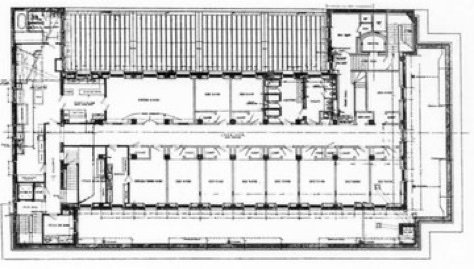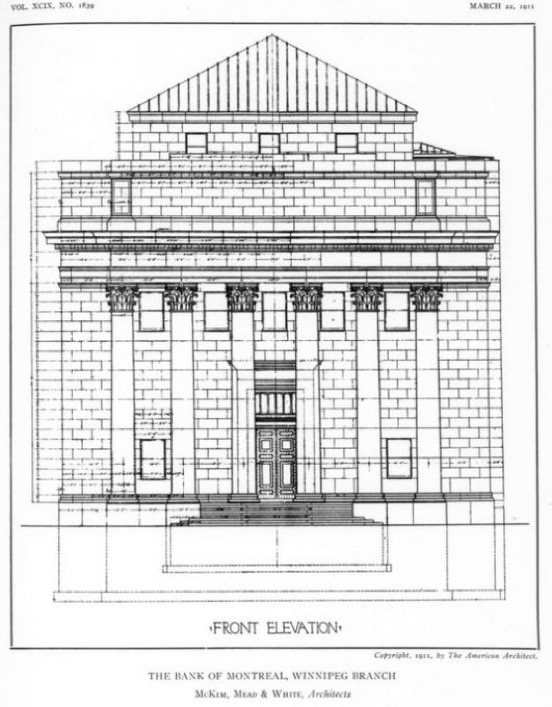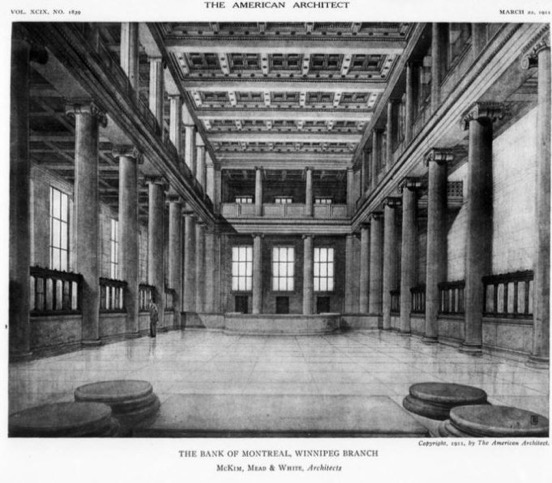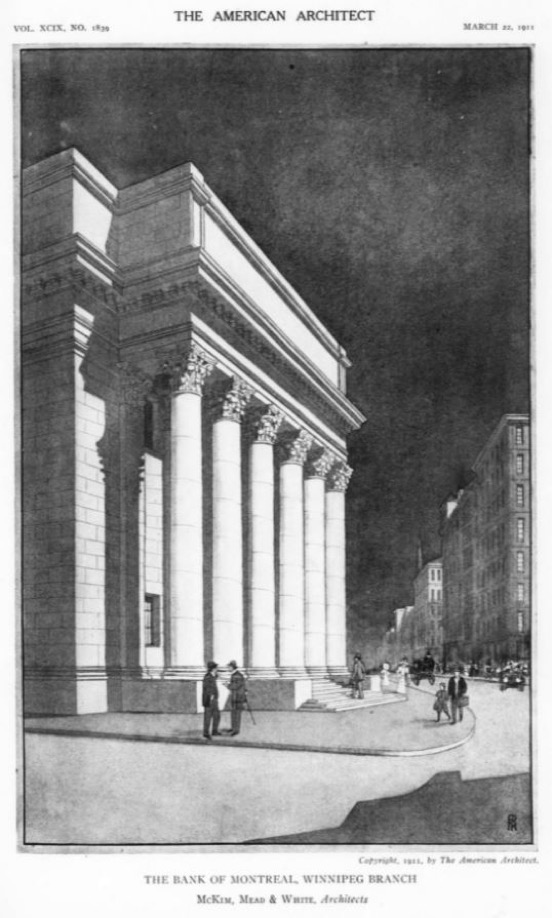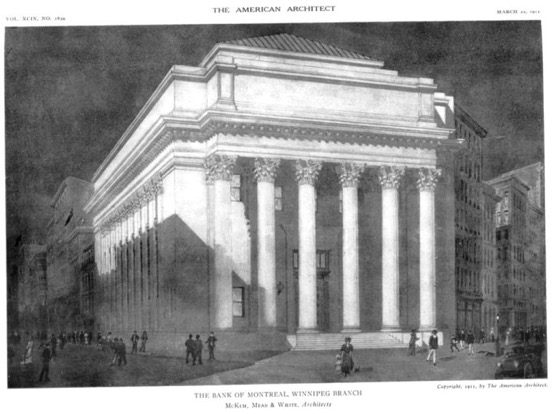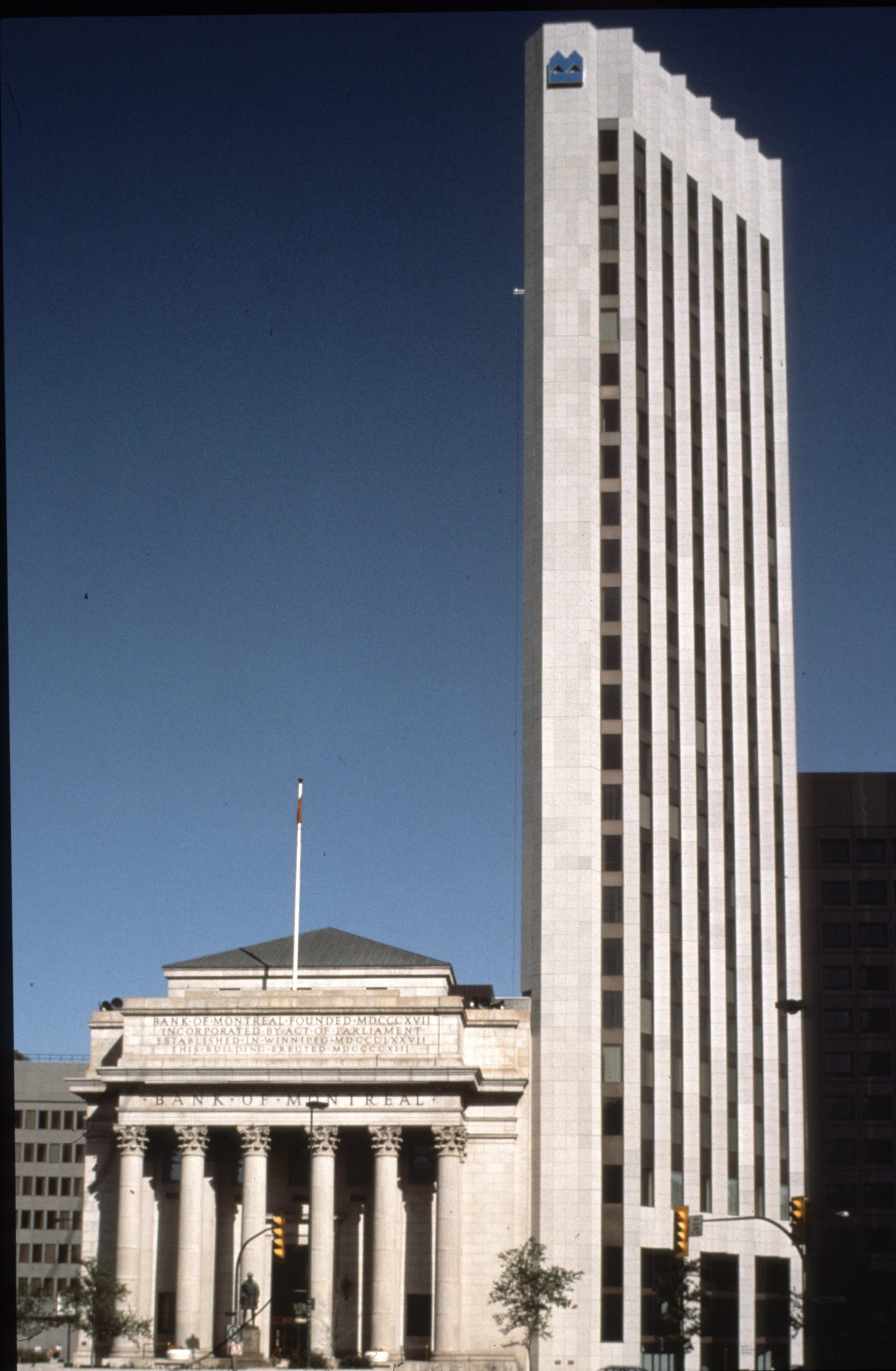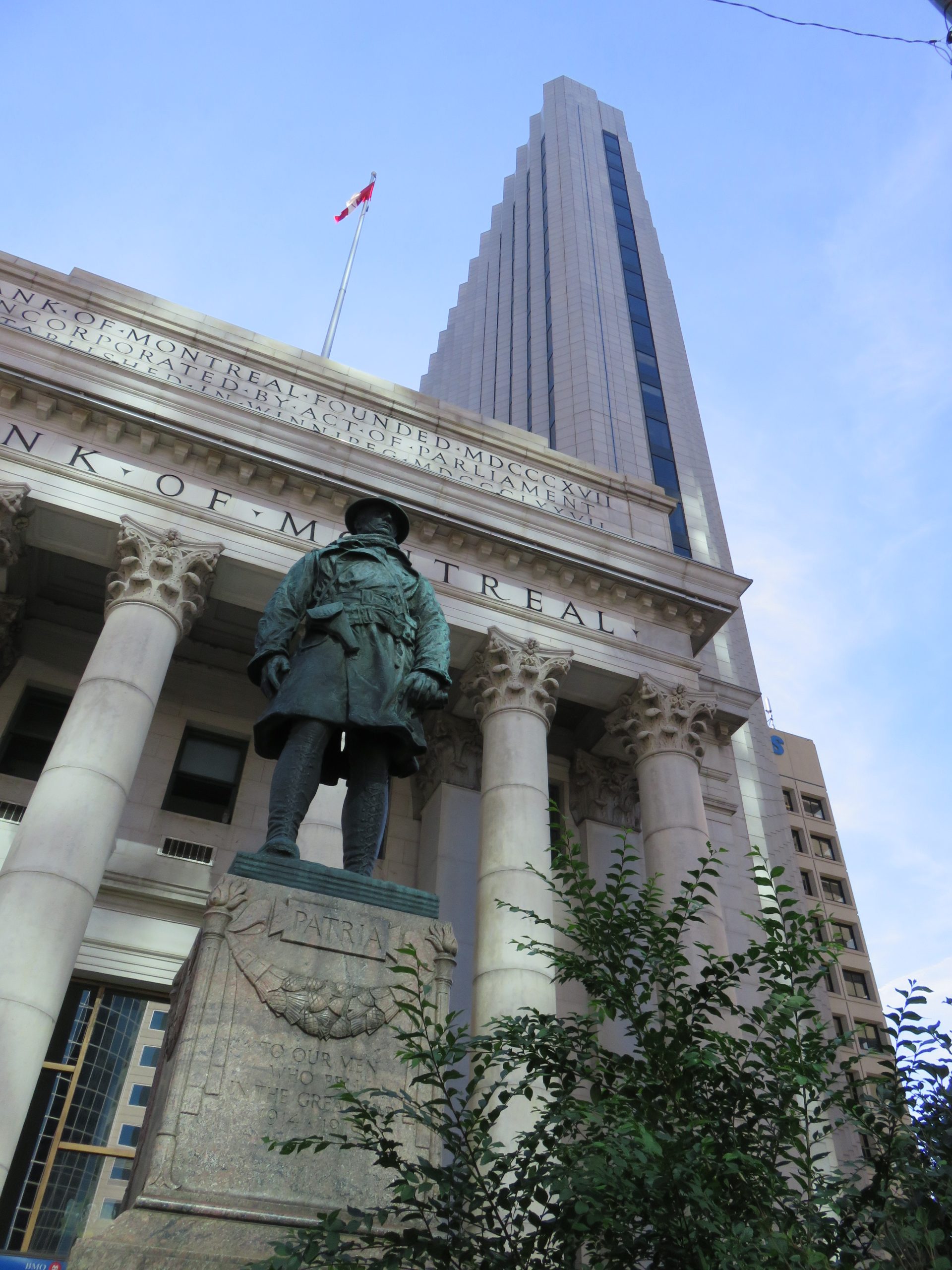Red River Metis National Heritage Centre
| Former Names: |
|
|---|---|
| Address: | 335 Main Street |
| Current Use: | Museum and Heritage Centre |
| Original Use: | Bank |
| Constructed: | 1909–1913 |
| Architects: |
|
More Information
Perhaps the finest example of neoclassical architecture in Winnipeg, the Bank of Montreal building was constructed between 1909 and 1913. The elegant, temple-like building holds a prominent location at Portage and Main. The granite-clad Beaux-Arts style structure marks the southern edge of what remains of Bankers’ Row, a collection of early twentieth-century office towers and banking halls, now interspersed among modern commercial buildings and vacant lots on Main Street.
The Bank of Montreal, with its classical colonnade and commanding location, is a prominent Winnipeg landmark. Designed by the internationally renowned McKim, Mead and White of New York City, the building is an excellent example of monumental Beaux-Arts architecture, executed in granite and wrapped around a substantial structure of fireproof concrete, steel and brick. The grand yet conservative exterior and the refined opulence of interior details and finishes were intended to impress, but also to assure customers and the general public that the Bank of Montreal was a sound, trustworthy institution. As the third Eastern Canadian chartered bank to open a branch in Winnipeg, the Bank of Montreal played an early role in the city’s economic development, including its emergence in the early twentieth century as a regional financial centre.
The interior of the building has four floors. The first floor is the large banking hall, complete with tellers’ area, manager’s office, and washrooms. The second floor contained living quarters for bank officers. The third floor had a dining hall and lounge areas and the fourth floor contained the officers’ sleeping quarters, sitting rooms and washrooms. These conditions lasted until the 1950s when the sleeping quarters were replaced with additional office space.
Neoclassical references continue inside the building with four Ionic columns standing in the vestibule and columns visible throughout the interior. The interior is finished with high-quality materials. Floors and counters are finished in Botticino marble imported from northern Italy and the ceiling is covered in gold leaf. In 1975, the entire interior was restored to its 1913 appearance but with contemporary services areas.
In 2020, the Manitoba Métis Federation purchased the building for the future home of the Red River Métis National Heritage Centre.
Design Characteristics
| Height: | 4 storeys |
|---|---|
| Style: | Neoclassical |
| Neighbourhood: | Downtown |
- Key elements of the Bank of Montreal’s Beaux-Arts design include:
- – the wide main staircase leading up from sidewalk level to the three-storey structure
- – the building’s substantial rectangular form, based on the design of a Roman temple and clad in granite from Bethel, Vermont
- – the front elevation, with its massive portico featuring six unfluted Corinthian Order columns supporting the immense entablature and parapet
- – the richly embellished northeast facade featuring pilasters with capitals similar to the front columns
- – the door and window openings including, on the front facade, the ornate main door framed by large glass and metal lights and the smaller mezzanine openings and, on the northeast elevation, thin, multi-paned elements located between the pilasters and set in ornate metal frames
- – the copper-covered roof house
- Key elements of the building’s imposing and carefully restored interior, which the Bank of Montreal continues to occupy, include:
- – the Botticino marble-lined entrance foyer with brass accenting
- – the volume and ornamental finishes of the two-storey banking hall, including the marble-clad Ionic colonnades which encircle the hall to support the mezzanine and also extend from the mezzanine to the ceiling, the painted ceiling adorned with gold leaf, the three stained- and leaded-glass windows at the east end, the curved marble staircase in the southwest corner leading to the mezzanine, etc.
- – the offices and boardroom on the west side of the mezzanine, including wood accents, marble fireplaces, etc.
- – the basement vault area with marble, brass and wood finishes, etc.
- Source: Historic Places Canada




